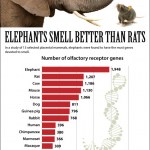dog
A new study shows that walking your dog is good for your health. Here is a YouTube video summarizing the findings of the study:
Let's not forget that walking your dog is also very good for your dog. According to PetMD, some benefits include weight control, keeping your dog limber, controlling destructive behaviors and hyperactivity, and of course building a bond between you and your pet.
If you have a cat however, it might be best to just let the cat walk you as demonstrated in this YouTube video:
Image By Jackie - Flickr: Cliche, CC BY 2.0, via Wikimedia Commons https://commons.wikimedia.org/w/index.php?curid=24285298
Proteins are not normally found in the urine of healthy individuals as the filtering units of the kidney prevent the loss of large proteins and smaller ones are typically reabsorbed. A team of researchers at the University of Sao Paulo in Brazil and Ohio State University recently searched for biomarkers indicative of early stages of kidney disease in dogs. They discovered that the urine of dogs in stages 1 or 2 of chronic kidney disease…
Image from Pete Markham via Flickr Creative Commons (https://flic.kr/p/8ctqVC)
Researchers at the University of Cambridge in Britain recently studied 'willpower' in pet Labrador retrievers. After allowing each dog to smell a hot dog, the researchers placed the hot dog in a hamster cage and sealed it shut with duct tape. While some dogs showed only mild interest in the sealed-up hot dog, others were fixated on the out-of-reach treat. One dog, named Ash, broke apart the contraption to obtain the treat. This is interesting because although Ash is not obese or overweight, he…
Acupuncture is a theatrical placebo, nothing more. It has no "curative powers," and, when studied objectively in good double-blind, randomized controlled clinical trials with proper sham acupuncture controls, there is consistently found to be no difference between sham and "true" (or, as they like to call it, "verum") acupuncture. (Indeed, I have written about this many times.) The only exceptions to this rule tend to be studies that come out of China. Basically pretty much all acupuncture studies that come out of China are positive because they appear to be conducted with the intent to…
A special thank you to reader Dr. Barbara Goodman, Professor of Physiology at Sanford School of Medicine of the University of South Dakota who sent me a story from The Scientist about sleep in animals complete with footage of a dolphin that was seen apparently "sleeping" (video posted on YouTube):
Why do animals sleep? This is a question with many potential answers. It is known that birds and mammals experience slow-wave and rapid eye movement (REM) sleep patterns. During the first pattern, slow waves with high amplitudes can be seen if measuring electrical…
New research published in Biology Letters suggests that, similar to dogs, horses may understand our facial expressions. In a quote published in Discovery News, study author Amy Smith (University of Sussex) said, "It's possible that horses developed this ability during their 6,000-year co-evolution with humans, or indeed that individual horses learn it during their lifetimes."
To examine this question, the research team showed images of men with negative or positive facial expressions to 28 horses:
Sources:
AV Smith, L Proops, K Grounds, J Wathan, K McComb. Functionally relevant responses to…
If you own a dog you may agree that it seems as if they understand our feelings. While some may call this anthropomorphizing, you know ascribing human emotions to animals, new research may vindicate the feelings of many pet owners. A study recently published in Royal Society Open Science provides evidence to suggest that dogs can mimic the emotional state of their owners as well as their canine friends, a process similar to empathy called emotional cognition. The research team recorded the behavior of animals at a dog park in Palermo, Italy and noticed that the…
Dr. Mark Mamula at Yale University has been working on developing a vaccine for cancer. Here is an interview featuring Dr. Mamula discussing how dogs are helping researchers test a vaccine that so far, has shown promise in fighting cancer growth.
Video Source:
NBC www.King5.com
Another new study published in Nature Communications shows follows along with the prior post and shows that ancestral dogs were ambush hunters that evolved from forest dwelling animals similar to a mongoose (or a cat).
These early ancestors to dogs were ambush predators. The image shows Hesperocyon (left) and later Sunkahetanka (right). Image from Discovery News, by Mauricio Anton
An international team of researchers studied archived samples of elbows and teeth of multiple species of dogs that lived between 40 - 2 million years ago.…
By Noel Feans (originally posted to Flickr as Watch your back!) [CC BY 2.0 (http://creativecommons.org/licenses/by/2.0)], via Wikimedia Commons
New research suggests that cats may have played a role in the extinction of about 40 species of wild dogs by simply out-hunting them and therefore consuming more food.
The study noted that dogs first appeared in North America around 40 million years ago and by 22 million years ago there were over 30 species of wild dogs. Cats arrived from Asia around 20 million years after dogs appeared. The arrival of cats…
Image from Scientific American (Credit: S Gart, J Socha, Vlachos, Jung)
I have to be honest. I have always wondered whether my dog actually got any water in his mouth. It always seemed to me that the majority of water ends up on my floor. High speed video collected and analyzed by a team of researchers from Virginia Tech (Sean Gart, Jake Socha and Sunghwan Jung) and Purdue University (Pavlos Vlachos) has shown exactly how a dog is able to drink water...and also explains why they are so messy doing it. Their research was presented at the 67th Annual Meeting of the American Physics…
I came across this interesting literature on what foods you should avoid feeding a dog from the ASPCA Animal Poison Control:
According to a new statement from the CDC, while Ebola is deadly to humans and animals, it is very difficult to catch. Therefore, they concluded that pets are not at significant risk of Ebola in the US. Moreover, there have been no reports of dogs or cats becoming ill in Africa. For more information, visit the CDC website
http://www.cdc.gov/vhf/ebola/transmission/qas-pets.html
Image of Bretagne from www.eonline.com
On this anniversary of 9/11 we remember not only the victims but also the heroes of that fateful day including countless first responders as well as their rescue animals that searched tirelessly for victims. The last known living rescue dog from 9/11 is Bretagne, a 15-year old golden retriever who returned to the memorial site with her handler Denise Corliss. She was only 2 years old at the time of the 9/11 attacks.
Visit NBCNews.com for breaking news, world news, and news about the economy
According to veterinarian Dr. Cindy Otto who took care of the…
Like Aesop's fable, rats have another reason to be envious of elephants. Elephants also have significantly more genes that can detect different smells (i.e. olfactory receptor genes) than other super-sniffers like rats and dogs. In fact, compared to 13 other species, African elephants have 1,948 genes related to smell putting them ahead of the previous record holder, rats that only have about half as many genes. Primates have much fewer with only 296-396 of these olfactory receptor genes. Interestingly, the common ancestor of mammals had 781 olfactory genes, meaning that primates have lost…
Just in case you have not seen this viral YouTube video of the family cat saving a boy from a vicious dog attack, I have embedded it below. I think this kitty deserves a nice fresh fish for dinner...every day.
An article was posted today in NBCNews featuring the heroics of other house cats.
Here is one of my favorites:
Image of a clawless house cat named Jack that chased a bear up a tree. Image from NBC News: http://www.today.com/pets/good-kitty-these-6-hero-cats-saved-humans-the…
These brave felines must really believe they have 9 lives!!
You can check out the rest of these heroic…
Day 3 of the Experimental Biology meeting was arguably one of the most exciting for comparative physiology. Here are the highlights from Monday:
Morning Seminars:
Birgitte McDonald from Aarhus University, Denmark presented, "Deep-diving sea lions exhibit extreme bradycardia in long-duration dives." Birgitte and Dr. Paul Ponganis measured the heart rate of California sea lions (Z. californianus) using digital electrocardiogram loggers and found that the heart rate was reduced (bradycardia) during dives along with reduced blood flow to the lungs and periphery. This helps preserve the oxygen…
Image from U Penn.
I came across this really interesting press release from the University of Pennsylvania that I just had to share.
Despite having a close relationship with dogs for thousands of years, we are still making new discoveries about our canine friends. Drs. William Beltran (School of Veterinary Medicine), Artur Cideciyan (Perelman School of Medicine), and colleagues teamed up to study canine eyes in an effort to improve treatments for humans with retinal diseases.
Dr. Beltran was quoted as saying “It’s incredible that in 2014 we can still make an anatomical discovery in a…
A golden retriever in a fMRI scanner. Image by ENIKO KUBINYI from The Scientist.
A paper published in Current Biology describes research using functional magnetic resonance imaging (fMRI) to compare the sound processing regions of brains in humans and dogs (border collies and golden retrievers). The subjects listened to almost 300 sounds (vocalizations from dogs and humans as well as non-vocal sounds) or no sound as a control. They used the fMRI to locate sound-sensitive regions (auditory cortex) in the human and dog brains. Not surprisingly, the human auditory cortex was mostly (87%)…
Scientists have identified the origin of a genome for a specific type of transmissible cancer that has spread between dogs beginning 11,000 years ago!










